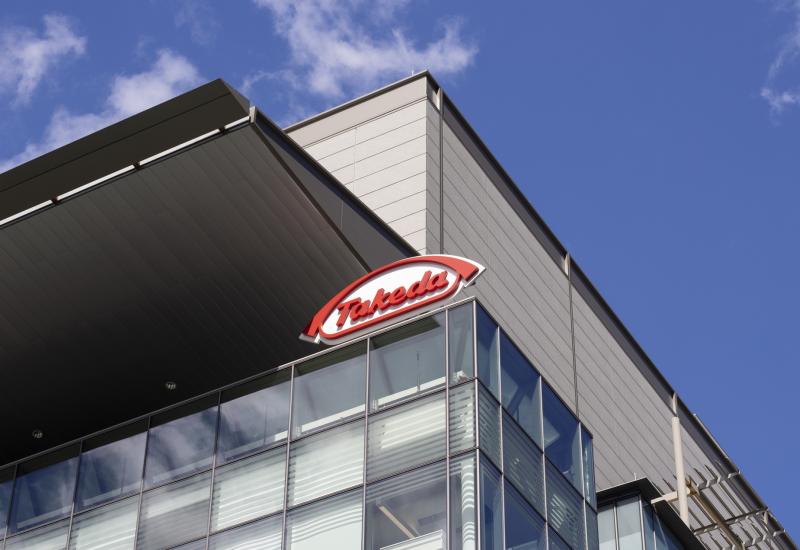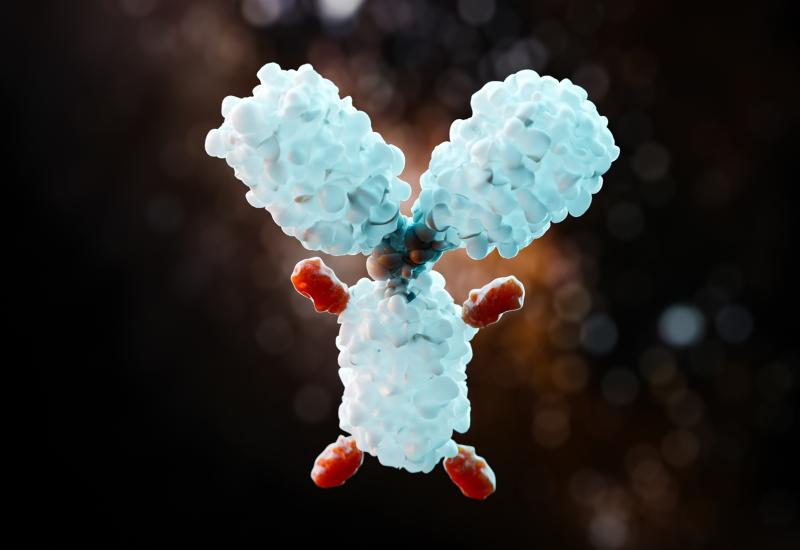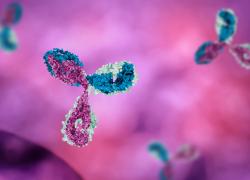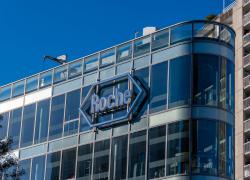
Pfizer bets big on a bispecific
The company is paying $1.25bn for a PD-1 x VEGF project, the largest deal here yet.
The company is paying $1.25bn for a PD-1 x VEGF project, the largest deal here yet.

Pfizer has joined the PD-(L)1 x VEGF club – but it hasn’t bought Summit, an outcome that some investors had hoped for. Instead, the big pharma has followed the lead of its rivals and picked up another China-originated asset, 3SBio’s SSGJ-707.
Pfizer is paying $1.25bn up front and up to $4.8bn in milestones, making this the most expensive deal here yet. It’s notable that BioNTech shelled out less, $800m, to buy the whole of Biotheus including BNT327, a PD-L1 x VEGF project it had previously licensed. Meanwhile, even the relative latecomer Merck & Co spent only $588m up front on LaNova Medicines' LM-299 last November.
Summit kicked off the PD-1 x VEGF trend in December 2022 when it licensed ivonescimab from Akeso for $500m up front. Since then, that project has shown promise in Chinese NSCLC trials, even beating Keytruda in the front line in Harmoni-2, but one question is whether results can be replicated in the west. A big test is approaching, with readout from the global Harmoni trial due mid-2025.
Huge expectations for ivonescimab have helped drive Summit’s market cap up to nearly $18bn, but this hasn’t stopped acquisition rumours, which came to a head when Pfizer and Summit agreed a clinical trial collaboration in February. Under the deal, the companies will test ivonescimab alongside several of Pfizer’s vedotin ADCs.
Pfizer has since professed to be “excited” about that deal, but it obviously wasn’t stoked enough to swoop for Summit. Perhaps even Pfizer baulked at the price tag, reasoning it could get another project much more cheaply. A question now is whether the latest deal will affect the collaboration.
It’s also notable that Pfizer went for SSGJ-707 instead of RemeGen’s RC148. Pfizer is developing a RemeGen-originated HER2-targeting ADC, disitamab vedotin, under a deal originally signed by Seagen – and RemeGen is carrying out a Chinese phase 2 trial of disitamab vedotin plus RC148, its VEGF x PD-1 contender.
Pivotal plans
Whatever the reasons, Pfizer now has global rights, outside China, to SSGJ-707 – as well as an option on commercial rights in China. Pfizer will also make a $100m equity investment in 3SBio.
A phase 3 trial of SSGJ-707, in first-line PD-L1-positive NSCLC, is already listed on the Chinese trial registry, but is marked as not yet recruiting. A US IND has also been cleared, but Pfizer hasn't disclosed US trial plans.
In a Chinese phase 2 in first-line NSCLC patients with PD-L1 ≥1% expression, SSGJ-707 produced an ORR of 71% with a 10mg/kg dose, according to 3SBio’s 2024 earnings presentation. This looks better than the 50% seen with ivonescimab in the Harmoni-2 trial, in a similar setting – with the usual caveats about cross-trial comparisons. Phase 2 data on SSGJ-707 in NSCLC are due to feature in an ASCO poster, which has now become a hot ticket.
Even if SSGJ-707 has promise Pfizer is behind the leaders, but Evercore ISI's Cory Kasimov noted that the group could jump into third place, behind Summit and BioNTech, if it can get a US phase 3 started quickly.
Meanwhile, there are still plenty of western groups that haven’t yet ventured into this space, including Roche, Bristol Myers Squibb and AstraZeneca. A look at the pipeline shows various other unpartnered assets, many of them also from China. Who will be next to take the plunge?
Clinical-stage VEGF x PD-(L)1 projects
| Project | Targets | Originator | Status |
|---|---|---|---|
| Ivonescimab | VEGF x PD-1 | Akeso (licensed to Summit) | Data from US ph3, Harmoni, in 2nd-line NSCLC due mid-2025 |
| BNT327 | VEGF x PD-L1 | Biotheus (now BioNTech) | Global ph3 Rosetta Lung-01 (SCLC) & ph2/3 Rosetta Lung-02 (NSCLC) began early 2025 |
| SSGJ-707 | VEGF x PD-1 | 3SBio (licensed to Pfizer) | China ph3 in 1st-line NSCLC to start Jun 2025 |
| SCTB14 | VEGF x PD-1 | Sinocelltech | China ph2/3s in NSCLC (1st-line & 2nd-line) |
| AP505 | VEGF x PD-L1 | AP Biosciences | China ph2s in solid tumours & colorectal cancer |
| JS207 | VEGF-A x PD-1 | Junshi | Various China ph2s |
| Palverafusp alfa (IMM2510) | VEGF x PD-L1* | ImmuneOnco (licensed to Instil Bio) | China ph2 in NSCLC & TNBC |
| RC148 | VEGF x PD-1 | RemeGen | China ph2 in breast cancer (disitamab vedotin combo) |
| Sotiburafusp alfa | VEGFR1 x PD-L1 | Huabo Biopharm | China ph2 in renal cancer |
| AI-081 | VEGF x PD-1 | OncoC4/AcroImmune | US ph1/2 BiPAVE-001 in solid tumours |
| MHB039A | VEGF x PD-1 | Minghui Pharmaceutical | China ph1/2 in solid tumours |
| MK-2010 | VEGF x PD-1 | LaNova (licensed to Merck & Co) | China/Australia ph1/2 in solid tumours |
| CVL006 | VEGF x PD-L1 | Convalife Pharmaceuticals | China ph1 in solid tumours |
| SG1408 | VEGF x PD-L1 | Hangzhou Sumgen Biotech | China ph1 in solid tumours |
Note: *fusion protein, as the rest are bispecific MAbs. Source: OncologyPipeline.
8747













